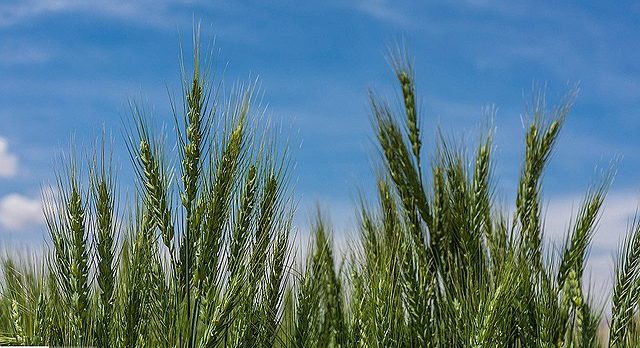Originally published September 19, 2024. The government has promised wheat farmers in Zimbabwe cash payment in U.S. dollars to help them reinvest.
Producer prices for the 2024 crop will be at $450 a tonne for regular and $470 for premium wheat.
Though less than 2023’s import price of $485 per tonne, the new rate is strong from a production expenditure angle. This is because in 2024 farmers have benefited from lesser irrigation water and fertilizer import costs than previously, according to the government.
Agricultural expert Dr. Reneth Mano says the state has been importing blending wheat at $420 a tonne in 2024, reports the Zimbabwe Mail.
He added that forex payment including for standard wheat will benefit growers who can directly import fertilizers.
On his part, the head of the Food Crop Contractors Association, Graeme Murdoch said that the new payment method reflects production costs. For example, farmers can use the efficient U.S. dollar to source for fertilizer and pay for their irrigation bills.
Currency Inflation Conundrum
The development comes five months after the April 2024 introduction of Zimbabwe’s new gold-reinforced ZiG currency to cut hyperinflation.
Though Zimbabwe has since 2007 been switching currencies to fight inflation, hyperinflation still peaked in May 2020 at 785.55%.
During the period from 2007 and 2024, several foreign currencies such as the U.S. dollar and the South African Rand have figured prominently. Many shopkeepers and farmers order their commodities or seed from abroad and therefore need ready foreign cash.
Contextually, food and non-alcoholic beverages are the biggest consumer price index categories at 31% share annually. This is why ordering farm inputs from abroad comes cheaper than buying locally, especially for small-and medium-scale wheat farmers.
Wheat Farmers in Zimbabwe Claim Half National Acreage
Indeed, September 2024 governmental data shows that 50% of the national acreage of the late season crop is by small-scale farmers.
Such farmers have sowed the grain in 80,000 hectares, especially in the strategic Mashonaland West irrigation schemes in Northern Zimbabwe.
Around 25 smallholder wheat growers unite and farm together in a scheme, which improves their collective returns.
Besides, the production rate in 2024 in some schemes has risen by 100% year-on-year to 5 tonnes per hectare. This means good returns when payment comes in foreign currency.
In short, U.S. dollar payments will greatly leverage the investment of income for wheat farmers in Zimbabwe. And to understand their sector better, below are national statistics on wheat.
Zimbabwe Wheat Statistics
Zimbabwe produced 337,212 tonnes of wheat in 2021 per official government figures, according to FAOSTAT. Unofficial figures show that production then slumped to 200,000 tonnes in 2022, while other sources cite 175,000 tonnes. Production in 2021 and 2022 however marks a decade’s peak. Between 2008 and 2019, the output hovered between a low of 34,000 tonnes in 2012 and a high of 170,000 tonnes in 2018.
How much is Zimbabwe’s producer price of wheat?
The Grain Marketing Board (GMB) reported 2024’s producer prices at $470 and 450 per tonne for Grade 1 and standard wheat, respectively.
Why is foreign currency important in Zimbabwe’s wheat sector?
Foreign currency helps millers import high quality grain, which they blend at the ratio of 30% with 70% local grain to improve flour quality. This imported portion is known as “blending wheat.” But because of forex shortage, sometimes millers have to use 100% local wheat at the expense of flour quality.
Which countries trade with Zimbabwe in wheat?
As the 96th biggest wheat exporter in 2022 at $35,400 according to OEC, Zimbabwe exports almost all of its grain regionally. Botswana received the lion’s share in 2022 at $12,100, followed by South Africa at $11,800. On the flip side, Zimbabwe enjoys an import trade imbalance. In 2022, for instance, the country ordered $106 million worth of wheat, mainly from South Africa at $58,400 or 50% share. The rest came from Poland, Mozambique, Latvia and Argentina in descending order of value.
Which areas of Zimbabwe lead in wheat production?
The U.S. Department of Agriculture (USDA)’s data for 2022 shows that Mashonaland East in the country’s north leads production at 38%. Midlands at 17% follows, while Masvingo comes third at 13%. Mashonaland West and Manicaland finish at 11% and 7% proportions, respectively.
